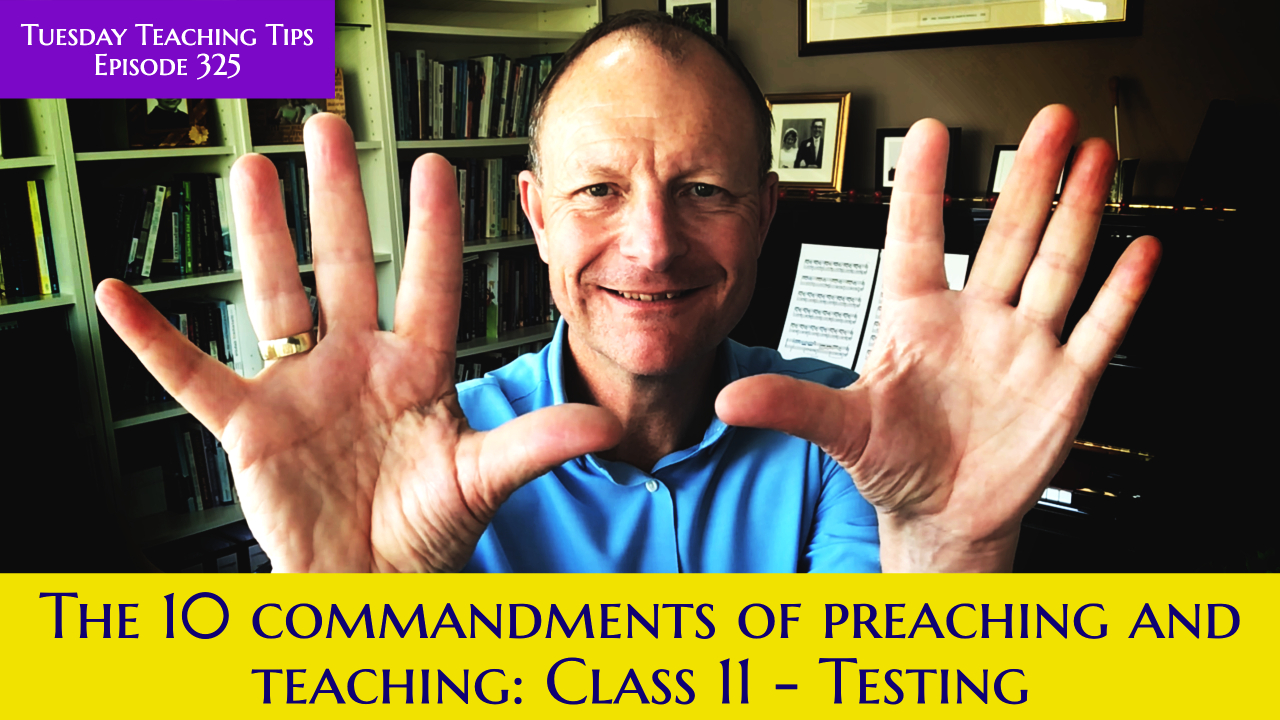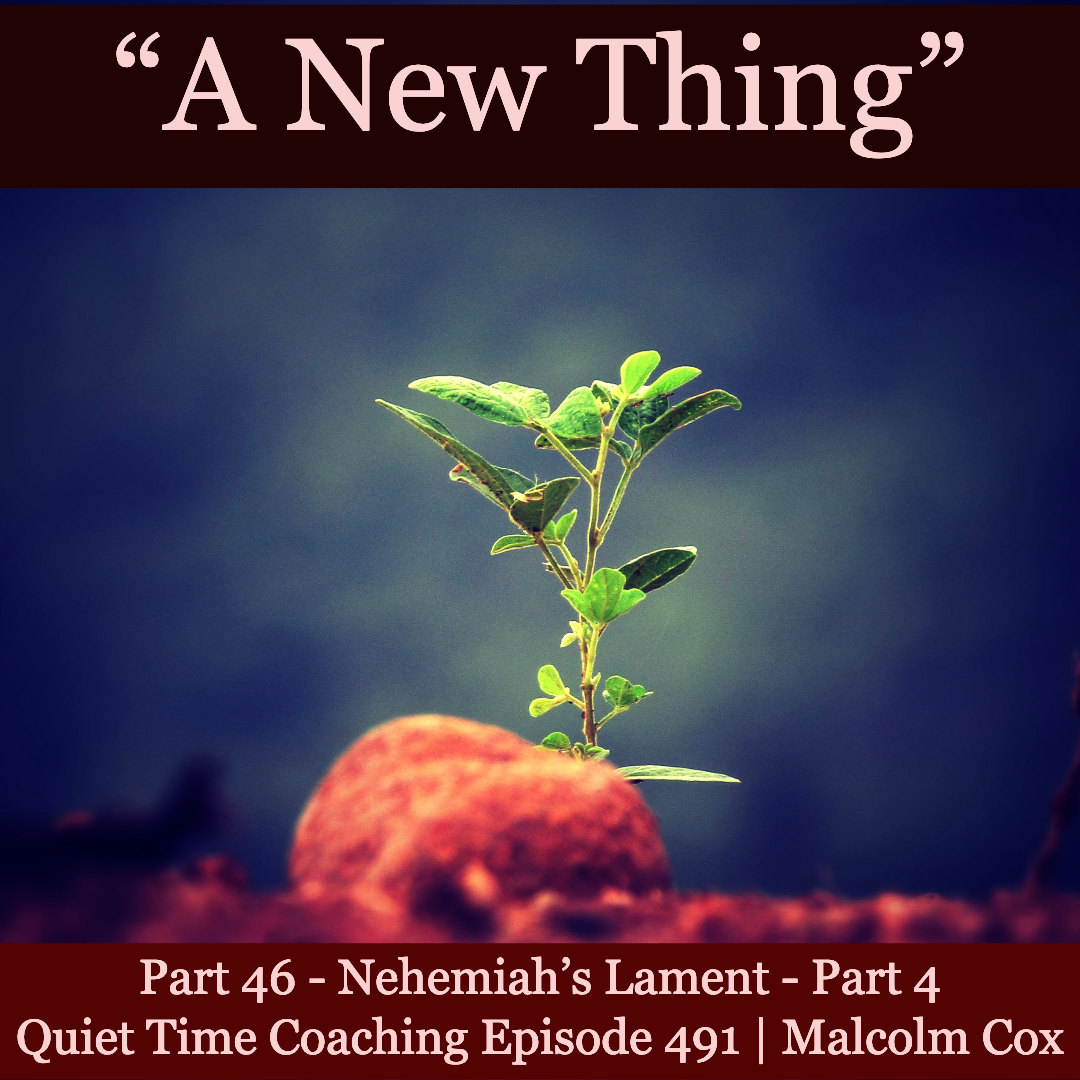10th Commandment: Tests aren’t just for students.

10th Commandment: Tests aren’t just for students.
Introduction
Do you ever wonder if your teaching is effective? Do you sometimes sense your preaching might not have the impact you had hoped? If so, you are like 99% of the speakers I know. The other 1% are deluded.
“At Iconium Paul and Barnabas went as usual into the Jewish synagogue. There they spoke so effectively that a great number of Jews and Greeks believed.” (Acts 14:1 NIV11)
Point of Clarification
Teaching and preaching are dynamic skills that require continuous refinement. We are never done learning. It takes humility for a student to learn, and it should take no less humility on the part of us who teach and preach for us to improve in our effectiveness. To place yourself in a position of learning can be a little scary. Don’t let that put you off from discovering how to grow. Your security in God is what matters, not what your students think of you.
12 Tips for teachers to grow
- Self-Reflection: Set aside time regularly to reflect on your teaching practices. Think about your lessons, interactions with students, and classroom dynamics. Consider what went well and what could have been better. Reflecting on your experiences can help you pinpoint areas where you might need improvement.
- Solicit Feedback: Ask for feedback from colleagues, mentors, supervisors, and even students. Constructive feedback from different perspectives can provide insights into areas you might not have considered. Be open to receiving both positive and constructive criticism.
- Video Recordings: Record your teaching sessions and review the footage. Watching yourself teach can reveal body language, classroom management, and teaching techniques that you might not notice during the actual lesson. This can be a powerful tool for self-assessment.
- Peer Observations: Engage in peer observations with other teachers. Observe their teaching and have them observe yours. Discuss what you both observed, including strengths and weaknesses. Collaborating with colleagues can offer fresh perspectives on your teaching methods.
- Formal Evaluations: If your institution conducts formal evaluations, use them as opportunities to gather feedback. Take the evaluation reports seriously and consider the suggestions for improvement.
- Student Feedback: Gather feedback from your students through anonymous surveys or discussions. Ask them about what they find engaging and challenging in your teaching methods. This can provide valuable insights into areas that might need improvement.
- Professional Development: Attend workshops, seminars, conferences, and training sessions related to teaching. These opportunities can expose you to new techniques and approaches, helping you identify areas where you could enhance your skills.
- Keep Up with Research: Stay updated on current educational research and trends. This can help you identify gaps in your knowledge or areas where you might not be using the most effective strategies.
- Set Goals: Identify specific areas where you feel you could improve and set goals for yourself. For example, you might focus on improving classroom management, student engagement, or assessment methods. Having clear goals can give you a sense of direction.
- Experiment and Reflect: Don’t be afraid to try new teaching methods or approaches. Experimenting with different strategies can help you identify what works best for your students and teaching style. After trying new techniques, reflect on their effectiveness.
- Continuous Learning: Cultivate a growth mindset. Understand that weaknesses are opportunities for improvement rather than failures. Approach your weaknesses as areas where you can learn and grow.
- Journaling: Keep a teaching journal where you document your thoughts, experiences, and insights from your teaching journey. This can help you track your progress over time and identify patterns in your teaching practices.
Conclusion
Remember that assessing weaknesses is a continuous process, and growth takes time. Be patient with yourself and commit to ongoing self-improvement. By the way, one word of warning – don’t try all 12 at once. It will be overwhelming. Pick one, implement it and see what you learn.
Next time we will review the series.
Please add your comments on this week’s topic. We learn best when we learn in community.
Do you have a question about teaching the Bible? Is it theological, technical, or practical? Send me your questions or suggestions. Here’s the email: malcolm@malcolmcox.org.
If you’d like a copy of my free eBook on spiritual disciplines, “How God grows His people”, sign up at my website: http://www.malcolmcox.org.
Please pass the link on, subscribe, and leave a review.
“Worship the LORD with gladness; come before him with joyful songs.” (Psalms 100:2 NIV11)
God bless, Malcolm



